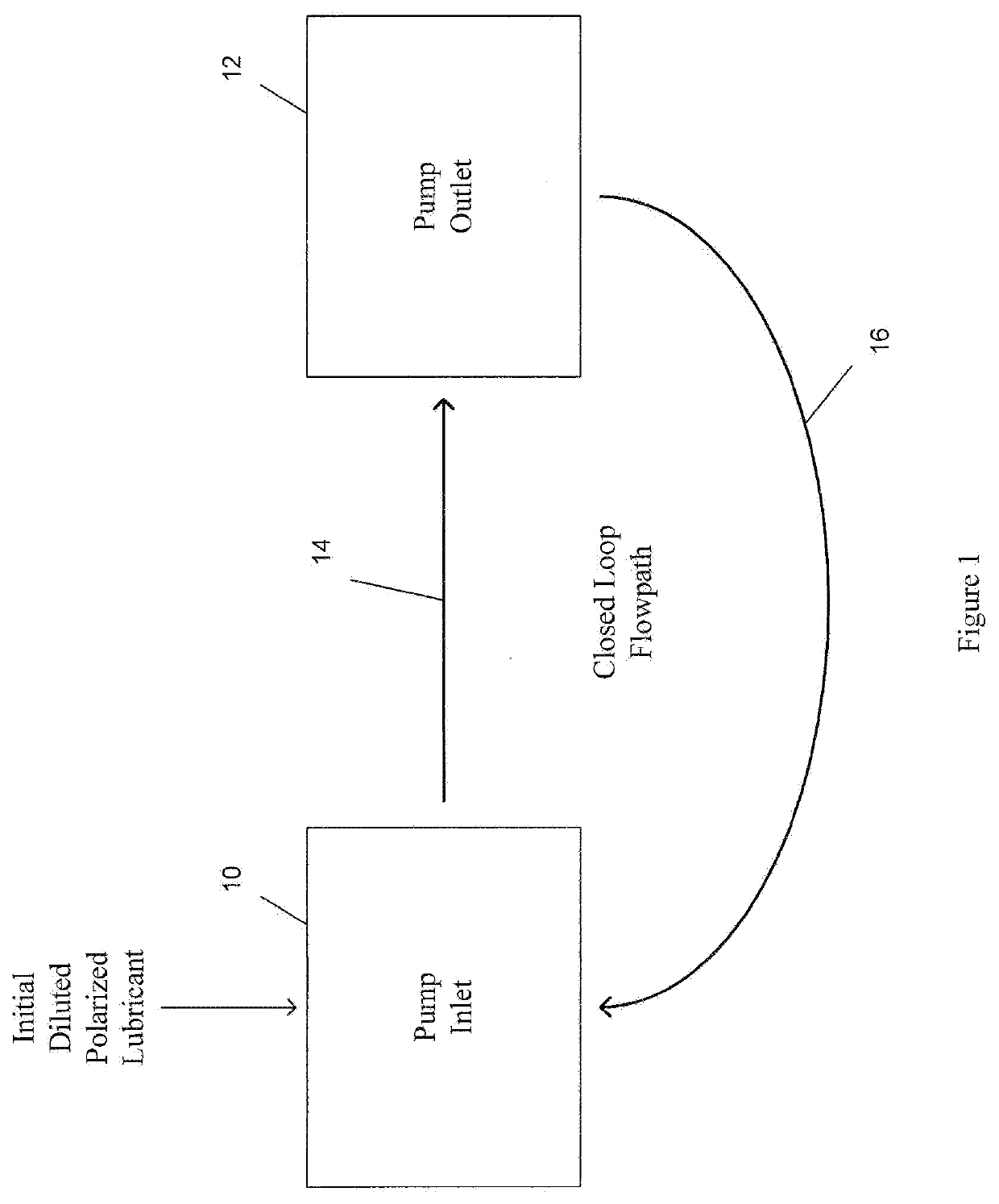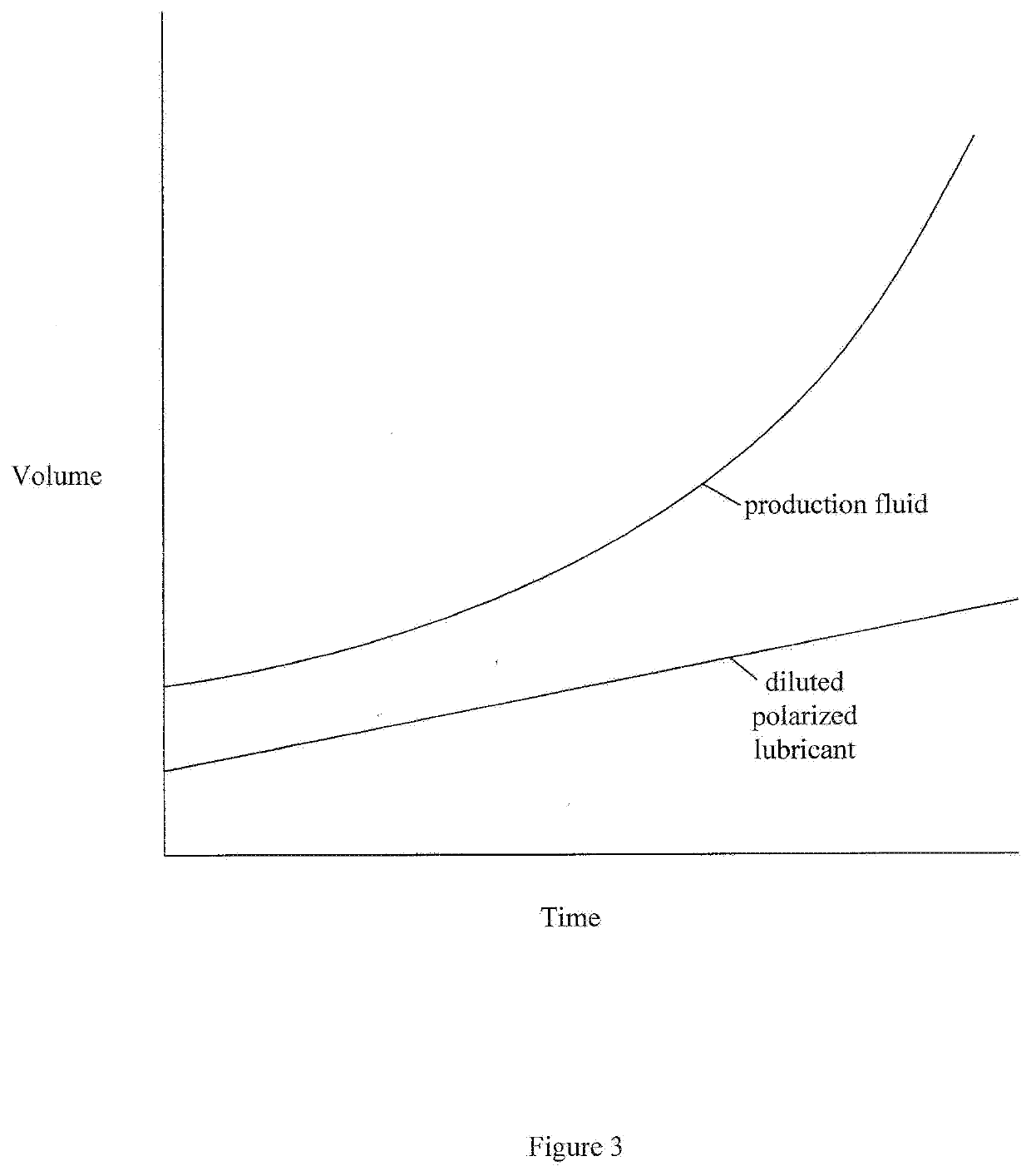System and method for reducing friction, torque and drag in artificial lift systems used in oil and gas production wells
a technology of artificial lift system and oil well, applied in the direction of machines/engines, positive displacement liquid engines, mechanical equipment, etc., can solve the problems of increased energy consumption, lost production, inefficient production, etc., and achieve the effect of reducing friction in the fluid production pump and increasing the protective barrier
- Summary
- Abstract
- Description
- Claims
- Application Information
AI Technical Summary
Benefits of technology
Problems solved by technology
Method used
Image
Examples
Embodiment Construction
[0033]The detailed description set forth below in connection with the appended drawings is intended as a description of certain embodiments of a diluted lubricant for use with oil and gas production wells, and a related method of use, and is not intended to represent the only forms that may be developed or utilized. The description sets forth the various structure and / or functions in connection with the illustrated embodiments, but it is to be understood, however, that the same or equivalent structure and / or functions may be accomplished by different embodiments that are also intended to be encompassed within the scope of the present disclosure. It is further understood that the use of relational terms such as first and second, and the like are used solely to distinguish one entity from another without necessarily requiring or implying any actual such relationship or order between such entities.
[0034]Various aspects of the present disclosure relate to a method of creating a lubrican...
PUM
| Property | Measurement | Unit |
|---|---|---|
| volume | aaaaa | aaaaa |
| volume | aaaaa | aaaaa |
| pressure | aaaaa | aaaaa |
Abstract
Description
Claims
Application Information
 Login to View More
Login to View More - R&D
- Intellectual Property
- Life Sciences
- Materials
- Tech Scout
- Unparalleled Data Quality
- Higher Quality Content
- 60% Fewer Hallucinations
Browse by: Latest US Patents, China's latest patents, Technical Efficacy Thesaurus, Application Domain, Technology Topic, Popular Technical Reports.
© 2025 PatSnap. All rights reserved.Legal|Privacy policy|Modern Slavery Act Transparency Statement|Sitemap|About US| Contact US: help@patsnap.com



